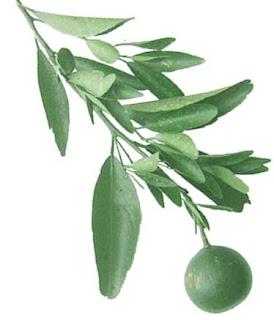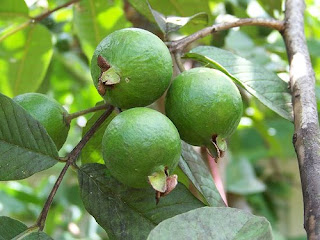THE PHILIPPINES 10 MOST PROMOTED MEDICINAL PLANTS
10 medicinal plants approved by the Philippine Department of Health (DOH) as an alternative medicine in treating particular disorders.
The Philippines is blessed with more than 500 medicinal plants, and below is a list of 10 medicinal plants approved by the Philippine Department of Health (DOH) as an alternative medicine in treating particular disorders.
Ampalaya:(Bitter Gourd) – Momordica charantia

Ampalaya is a herbaceous, climbing vine that has heart-shaped leaves and grows to 5 meters. In the Philippines, ampalaya is grown year long for its bitter edible fruit. Each plant bears separate yellow male and female flowers. The fleshy green fruit has an oblong shape.
Medicinal Uses (parts use: leaves, roots, fruits)
- Leaves or root decoction can be use to ease hemorrhoids.
- Juice made from leaves is use for cough, to heal wounds and as a purgative and to drive out intestinal parasites.
- Juice from fruit is effective for dysentery and chronic colitis.
- A mixture of seeds and roots is helpful in treating urethral discharges.
- Pounded leaves used for scalds.
- Concoction of leaves relieved fevers.
- It is also used for jaundice, eczema, abdominal pain, pneumonia, rheumatism, and psoriasis.
Recent studies have suggested that ampalaya is highly recommended for the treatment of diabetes. It contains a plant insulin responsible for its blood sugar lowering effect.
Akapulko: (Ringworm Bush) – Cassia alata

Akapulko or Acapulco in English is an erect, shrubby legume found throughout the Philippines. It grows up to 6 feet tall, with dark green compound leaves. It has yellow-orange flowers that produce on average 50-60 small, triangular seeds. The parts use are leaves, flowers and seeds.
Medicinal Uses: (parts use: leaves, flowers and seeds)
- The seeds are used in expelling intestinal parasites.
- Decoction of leaves and flowers eases cough.
- Crushed leaves and juice extract are used to treat fungal infections such as; ringworm, athlete‘s foot, scabies, eczema, and herpes.
- Pounded leaves are used for insect bites, rheumatism and reducing swelling of joints due to injuries.
- Mixture of leaves and flowers used as mouthwash in the treatment of stomatitis.
- The leaves stain is used as purgative.
- The juice of the leaves is used for the treatment of fetid discharges.
- Decoction of leaves are used to treat bronchitis and asthma.
Bawang: (GARLIC) - Allium sativum

low herb that grows to about 30-60 cm high. Garlic leaves are linear and flat and the bulbs are about 2-4 in. that are widely ovoid containing several angular and truncated tubers. In the Philippines,iIt is commercially grown in the provinces of Ilocos Norte, Batangas, Mindoro, Nueva Ecija and Cotabato.
Medicinal Uses:
- Crushing a lobe and massaging it to both temples can relieve headache
- Crushing a lobe of garlic and directly rubbing to affected areas is used to treat insect bites.
- Mixture of leaves and bulbs boiled is used for the treatment of fever.
- Decoction of leaves and bulbs is also used for tonsillitis.
- It is used for treating gastrointestinal spasms and digestive problems.
- Juice from crushed garlic is good for cough, sore throat, colds, asthma and bronchitis.
- Also used in the treatment of athlete’s foot.
Bayabas: (GUAVA) - Psidium guajava

The guava is a Perennial tree or shrub with oval to oblong leaves about 7.6 cm (3 inches) in length. At maturity, the tree will reach up to 25 feet high. It bears white flowers that developed into ordinary yellow fruits on ripening. Found throughout the Philippines and is a common backyard plant. The fruits are edible and is very high in Vitamin C. for its medicinal applications, the leaves are used.
Medicinal Uses:
- It has antiseptic, antispasmodic, and astringent properties.
- Fresh leaves are used for treating wounds and toothache.
- Decoction of fresh leaves is used as cleaning agent for wound to ease healing and to prevent infection
- Boiled fresh leaves is used for aromatic baths.
- Decoction of leaves is also used for diarrhea.
- Chewing fresh leaves is used as mouthwash to ease gum swelling.
- Decoction of leaves is also used for skin ulcers.
- Placing densely roll leaves into the nostril cavity can stop nosebleeds.
- It is also used as vaginal wash (after childbirth) or douche.
Lagundi: (Five-leaved chaste tree) - Vitex negundo

A small erect tree that grows to about 3m. The leaves are typically 5-foliate, blue flowers 6-7 mm long and globose black when ripe. Fruits about 4mm in diameter. For medicinal uses leaves, bark, roots and seeds are used.
Medicinal Uses: (parts use:leaves, bark, roots and seeds)
- Decoction of leaves are used for headache, toothache, fever, cough and asthma.
- Boiling leaves in coconut oil stop fungal infections on scalp.
- Ash of fresh leaves are used for swelled rheumatic joints.
- Decoction of leaves are used to ease amenorrhea, menstrual difficulties, menorrhagia, and Premenstrual Syndrome.
- Lukewarm decoction of leaves are used for sponge bathing.
- Mixture of leaves are used as wash in treating wounds and ulcers.
- Decoction of leaves taken as a diuretic.
Niyog-niyogan: (Chinese honeysuckle) - Quisqualis indica

Niog-niogan is a large climbing shrub that grow to about 2.5-8 meters. The leaves are egg-shaped and opposite with a pointed tip and a rounded base. The flowers’s color varies from white to purple orange and are aromatic and tubular. The fruit grows to about 30-35 mm long and their color varies from white to pink to red. The 30 to 35 mm long fruit is oval-shape and has five distinguishable wings.
Medicinal Uses:
- The seeds (dried nuts) and leaves are used for traditional medicine.
- Dried seeds are used for deforming.
- Decoctions of the root can be used as antihelmintic.
- Roasted seeds are used to ease diarrhea and fever.
- Fruit decoction is also used for gargling and to fight nephritis.
- The roots can be used to ease rheumatism.
- Decoctions of seeds and fruits are used as pectoral to combat ascaris.
- Juice out of leaves are used for boils, ulcers, and headache cause by fever.
- Pounded leaves are used externally for skin diseases.
- Decoction of boiled leaves used to ease difficulty in urinating.
Pansit-pansitan: (SHINY BUSH) - Peperomia pellucida

It is a small herb that grows may reach 40 cm high ad can be found in damp areas such as: yards nooks, walls and even roofs. Leaves are shiny light green, heart-shaped , and alternate. Stems are erect, juicy and glabrous with tiny flowers on a spike. The fruits are also very small; round to oblong, green but turns to black when ripe.
Medical Uses: (parts use: leaves and stems)
- Fresh juice out of stem and leaves combats eye inflammation.
- Concoction of leaves are used as treatment for headache, fever, common colds, sore throat, cough, coughing, and diarrhea.
- Also used to fight against prostate problems.
- Mixture and decoction of leaves and stems ease gout and arthritis.
- Concoction of stems and leaves is good against high blood pressure.
- Concoction of leaves are used for abscesses, conjunctivitis, rheumatic pains, and gout.
- Externally, as a facial wash for skin problems.
- Pounded whole plant used as warm poultice for wounds, boils, and pimples.
Sambong: (Blumea camphora) – Blumea balsamifera

Sambong is a tall, erect, half wood, strongly aromatic herb that thrives in open fields, grasslands and waste areas. The shrub can grow up to 4 meters tall grows up to tall. Leaves are elongated with jagged edge and bears yellow flowers.
Medicinal uses: (parts use leaves)
- Leaves is an effective poultice for abscesses.
- Decoction leaves is used to ease fevers and cystitis.
- Concoction of leaves is used for rheumatic pains.
- Fresh juice of leaves used for wounds and cuts.
- Poultice of leaves used for headaches and stomach pains.
- Tea is used for colds and as an expectorant.
- Concoction of leaves is used for treating dysentery, sore throat
Tsaang Gubat: (Fukien tea tree) - Ehretia microphylla Lam

Tsaang Gubat is a shrub that grows up to 5 meters. Found throughout the Philippines in secondary forests at low and medium altitudes Leaves in clusters, simple, rough, alternate, jagged towards the tip, slowly narrowing towards base. Tsaang gubat bears white flowers and a fleshy, yellow-orange when ripe fruits. >
Medicinal Uses: (part use; leaves)
- Taken as tea, it is effective for stomach ache, diarrhea, and dysentery.
- Decoction has also been used as a dental mouthwash.
- Leaves concoction is an antidote for plant-based poisoning;
- Leaves are also used to stop bleeding from snakebites. ; as body cleanser after childbirth.
- Decoction of leaves is used as disinfectant wash after childbirth.
Yerba Buena: (PEPPER MINT) - Clinopodium douglasii

Yerba Buena is a strongly aromatic herb of the mint family. This perennial plant can reach up to 1 meter long with ascending terminal branches. growth ranges from 0.6 meters to 1 meter. It has elliptic to oblong-ovate, elongated leaves 1.5 to 2 cm long and bears small, hairy whitish, light blue or purplish flowers. Yerba Buena plants are found in high elevated areas.
Medical Uses: (parts use: leaves and stem)
- Decoction of leaves is used for headaches, fever, toothaches, migraine and joint pains.
- Leaves soak in a glass of water is an effective mouthwash.
- Decoction of leaves is also used for treating indigestion, dysmenorrhea, stomach aches, diuresis, and relieves internal gas.
- Pounded or crushed leaves is effective for insect bites.
- For dizziness: Crushed fresh plants or leaves are sniffed.
- It is good for the health if taken as a tea.














